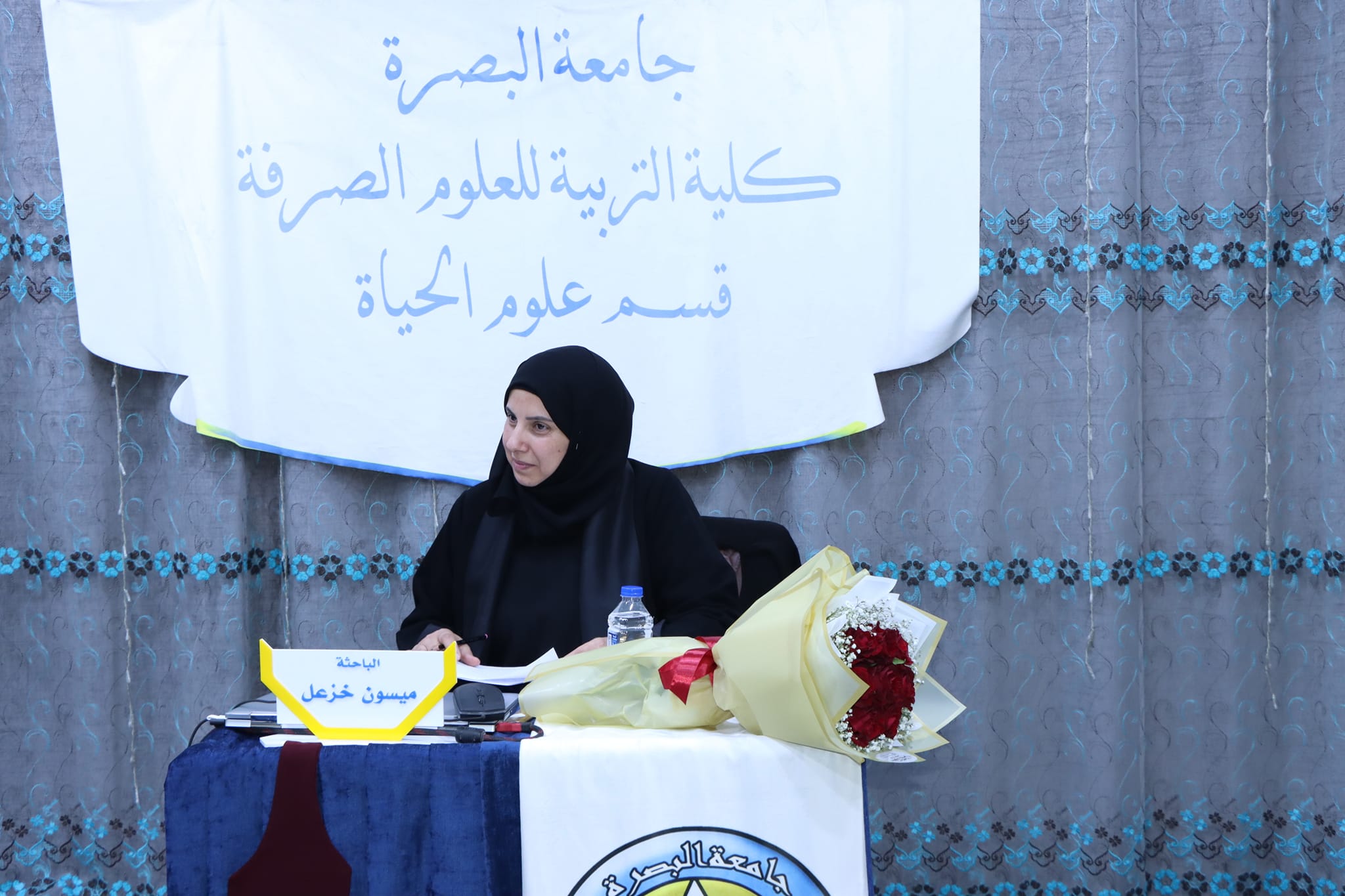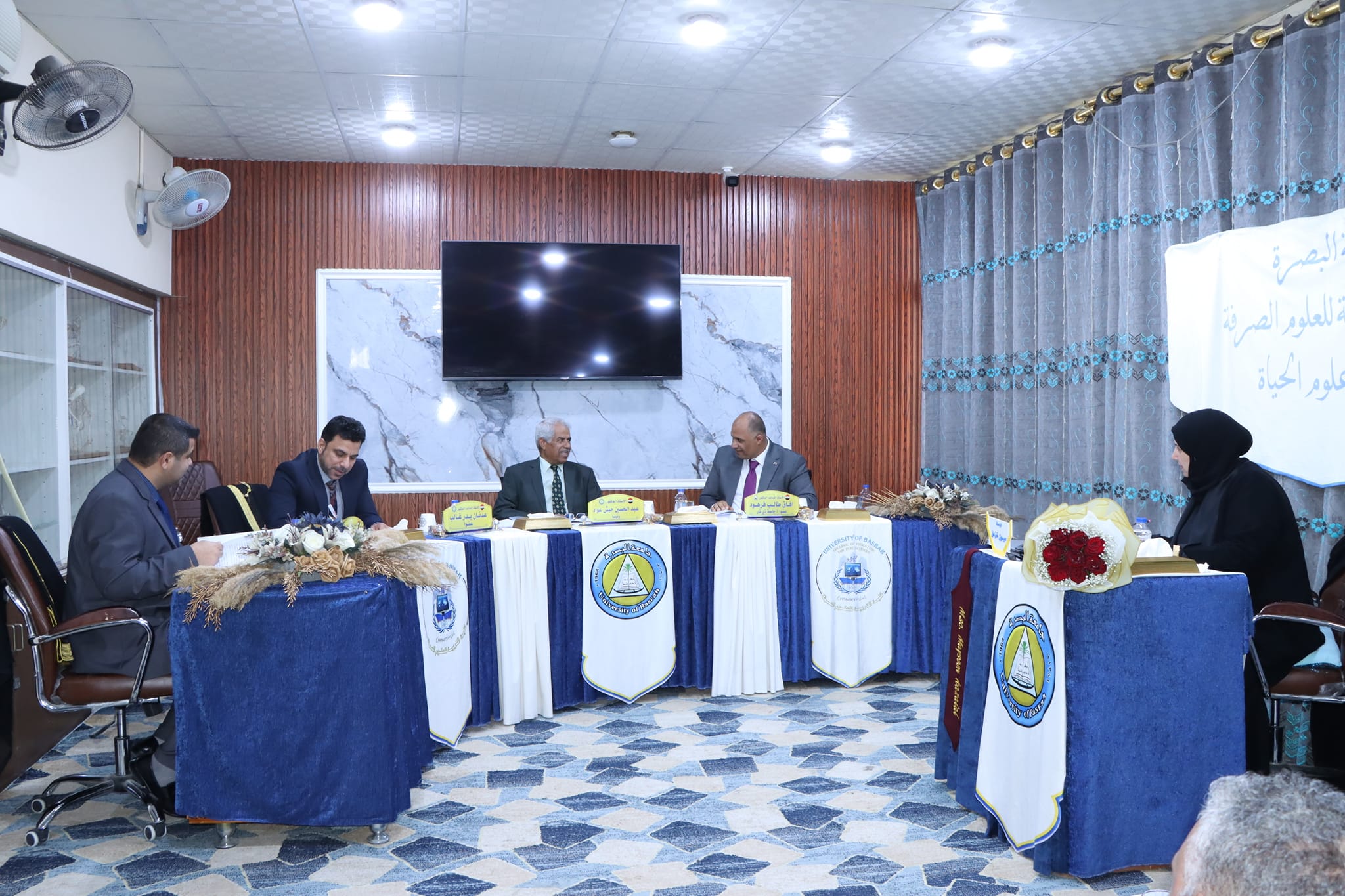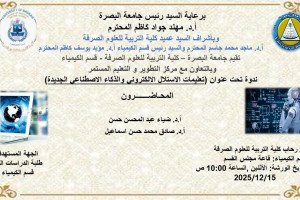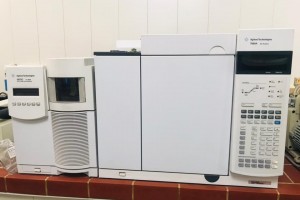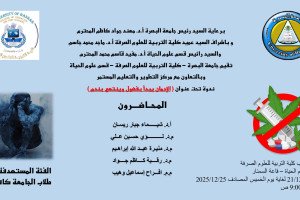
The College of Education for Pure Sciences, Department of Biology, discussed a master’s thesis on the characterization of the family of dehydrogenase proteins in Echinococcus granulosus.
The message submitted by the researcher (Maysoon Khazal) included:
Study of the Echinococcus granulosus parasite on other families of dehydrogenases (sodium pumping and non-proton pumping).
The nuclear and mitochondrial genomes contain 21 proton pump subunits.
Dehydrogenases are present in the components of the hydatid cyst (in the germinal layer and primary heads) as well as in cultured germ cells.
The genes (NAD3, NAD4, NAD6, and NAD4L) can be used in diagnostic studies because they are conserved across strains.
Structural complexes of hydrophobic subunits have high stability because they contain balanced proportions of structural components.
The message was recommended
The use of the seven hydrophobic subunits of the first complex, especially (NAD3, NAD4, NAD6, and NAD4L), previously unstudied units, in diagnosing the different strains of cysts, especially the very similar ones.
Using genetic genotyping to understand the effect of these genes on the parasite Echinococcus granulosus.
Searching for natural products or compounds that target these units and comparing them with compounds whose effects on other organisms have been studied.
Understanding the molecular mechanism of action of the other units of the first compound.
